I tend to work with a lot of clients who are building brand new businesses and often times haven’t worked with a team to build a new website before. I always try to make sure new clients understand how the full process works before we get started, and that designing and developing a website is a collaborative effort.
Having a good roadmap and communicating that well with a client almost always results in a website that is completed on time, leaves both sides feeling great about the final product, and is clearly setup for future growth.
So, What Does the Process Look Like?
Understanding the full process from beginning to end is a great way to visualize progress and to have a clear idea of what to expect at each step. Providing the right feedback at the right time ensures a smooth process. For instance, making major decisions about the basic requirements of the website during a final review will almost certainly drive up the cost in terms of time and money, and can lead to a less cohesive presentation on the website.
Here is how I view the different phases of a project:
- Understand the project goals
- Determine the right tools for the project
- Create a basic outline for the project
- Present an initial design draft
- Review a working draft
- Final review before production
Understanding the Project Goals
To me, this is the most important aspect of any project. Investing the time up front to understand the particular needs and goals of a project is crucial. I probably don’t know anything about your business or expertise. Helping me to understand what makes you and your products great will certainly help me to communicate those points to your potential customers.
Why do you need a website? Are you trying to sell products or just create a marketing front for your business? Who are your users? Do you need to reach customers across the world or just in a local area? Where do you envision your business and website in 1 year? What about in 5 years?
These are some of the questions I like to ask new clients which not only help me out, but may also help out my clients by allowing them to verbalize some of the core aspects of their business.
Determining the Right Tools for the Project
The first thing I want to decide for a new project is what tools are necessary. Is this project a good fit for WordPress, or perhaps an online shop that may benefit from using a platform like Shopify? Do we need a Content Management System (CMS) at all, or is this a project where I, or another developer (or team) will be involved to manage the website.
Choosing the right tools up front is a great way to be sure we are on the same page and my vision for the website is aligned with my clients. If we don’t take the time here to thoroughly review our options and make a sound decision, it could very easily result in having to redo the website unnecessarily in just a few years.
Creating a Project Proposal
Once I have a good understanding of a project, I will propose an outline of how I envision the website. This usually includes a paragraph describing the project along with specific requirements that are unique to that website. I will detail the tools I plan to use, and describe what I may need from the client moving forward.
Presenting an Initial Design
At this point, I will usually step away for sometime to create some designs based on the discussions I have had with the client. Once I start formalizing the design, I will present an initial draft to the client. Depending on the type of work, this may be sketches, a digital wireframe, or a more elaborate draft using Adobe XD, or something similar.
This is the first review of the actual website and is the time when it’s great to make major design changes, or determine if there are new needs we didn't foresee. Does the flow of the website feel right? Are we talking to the right customers with the right language? Nailing all of this down here and feeling confident with the design allows us to move forward much more easily to a working draft.
Reviewing the Working Draft
After going through a review process of the initial draft with a client, I will start working on moving the design into a working version. This will allow us to really see and feel how the website will be to users, and ensure that it works on all of the devices, browsers, etc. which we are targeting.
Prepare for Production
Once the website has been thoroughly reviewed, I will make any necessary adjustments and then prepare the website to be moved to production. The final step includes a review of site performance, and integrating any necessary production software, such as Google Analytics, security features, etc.
Once I have launched a website, I’ll spend several weeks ensuring everything is working, make sure the site is being registered by major search engines, and making small tweaks as needed.
Why This Process Helps
Having a clear plan up front has always resulted in a better website that really showcases a client’s business. Building a great website that accurately reflects your company and brings in new business is a collaborative effort that requires great communication between the client, developer, and any other team members involved in the project.
Working on a project that follows this roadmap is an enjoyable experience that makes both parties feel great about the work being done, whereas clumsy organization and a lack of planning can lead to an overly long project in which neither side feels great about the end result.
Have a project you'd like to talk about? Contact me and let's talk about how I can help.
